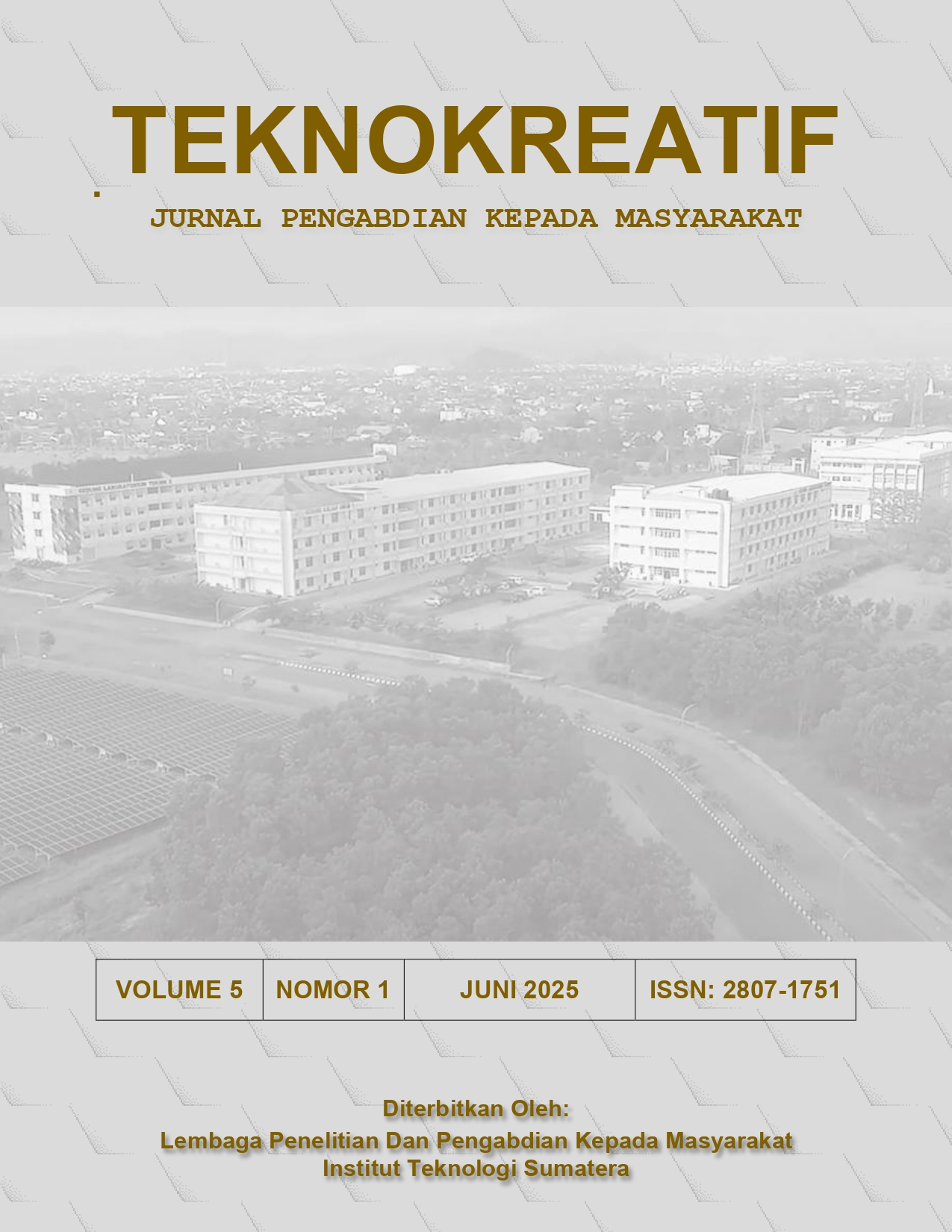Pengenalan Internet of Thing pada anak-anak Panti Asuhan Tiara Putri Korpri
Abstract
The purpose of this community service activity is to introduce the Internet of Things to children, particularly those in orphanages. The extraordinary development of digital communication technology offers significant positive impacts when properly understood. The method implemented is a knowledge transfer approach, which includes lectures and dialogues, along with examples of commonly used applications. The evaluation was conducted by dividing the participants into two groups: children and teenagers. For the children, the evaluation method involved a question-and-answer session with the success parameter being the number of participants raising their hands. For the teenagers, a pre-test and post-test consisting of multiple-choice questions were administered. The results were quite remarkable, with the success rate for the children reaching 62.5% and the teenagers nearly 88%, proving that the material was very well absorbed.
Downloads
References
[2] Sabar, A. C. A. A., K. Pertiwi, A. Afriansyah, and Z. Mufidah, “Penerapan Teknologi Budidaya Ikan dalam Ember (BUDIKDAMBER) Berbasis Internet of Things (IoT),” Teknokreatif J. Pengabdi. Masy., vol. 4, no. 1, pp. 61–67, 2024, doi: 10.35472/teknokreatif.v4i1.1660.
[3] U. A. Ramadhani, Z. Mufidah, and N. D. G. Drantantyas, Iot Dan Cloud Service Untuk Sistem Pertanian Pintar. CV. Edukatif Jayya Nusantara, 2023.
[4] V. Terzieva, S. Ilchev, and K. Todorova, “The Role of Internet of Things in Smart Education,” IFAC-PapersOnLine, vol. 55, no. 11, pp. 108–113, 2022, doi: 10.1016/j.ifacol.2022.08.057.
[5] H. Algozani and A. Aleryani, “The Impact of IoT on the Higher Education (Review Study),” … Netw. (SJITN)-ISSN 2312-4989, vol. 2, no. November 2018, pp. 38–48, 2018, [Online]. Available: http://ojs.sabauni.net/index.php/SJITN/article/viewFile/105/pdf_40
[6] Q. Khoir, “Smart Classrooms: Mengintegrasikan IoT dan AI untuk Pembelajaran yang Lebih Interaktif dan Terukur,” Andragogi J. Pendidik. dan Pembelajaran, vol. 4, no. 1, pp. 1–10, 2024, doi: 10.31538/adrg.v4i1.1301.
[7] M. Ndruru and S. M. Manurung, “Pengaruh Penggunaan Teknologi Internet of Things ( IoT ) dalam Pembelajaran Terhadap Keterampilan Berpikir Kritis Peserta Didik,” J. Pendidik. Teknol. Inf. Dan Komput., vol. 02, no. 01, pp. 39–43, 2023, [Online]. Available: https://journal.grahamitra.id/index.php/petik/article/view/96/187
[8] Sugiyono, Metode Penelitian Kuantitatif, Kualitatif, dan Tindakan. Alfabeta Bandung, 2013.
[9] G. W. W. Djul Fikry Budiman, A.Sjamsjiar Rahman, M. Syamsu Iqbal Misbahuddin and Fakultas, “Pengenalan Dan Pemanfaatan Teknologi Internet Of Things ( IOT) Menggunakan Modul Peraga Bagi Siswa Dan Guru SMK,” Pros. PEPADU 2021 Semin. Nas. Pengabdi. Kpd. Masy. Tahun 2021 LPPM Univ. Mataram, vol. 3, no. November, pp. 1–23, 2021.
Copyright (c) 2025 TeknoKreatif: Jurnal Pengabdian kepada Masyarakat

This work is licensed under a Creative Commons Attribution-NonCommercial-NoDerivatives 4.0 International License.


